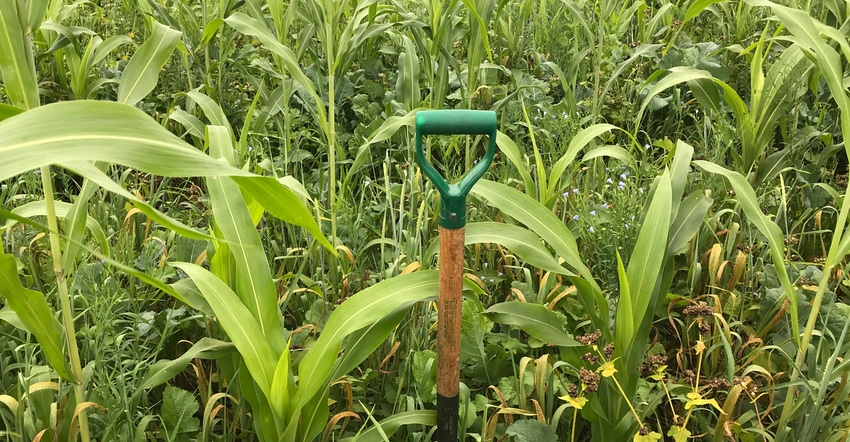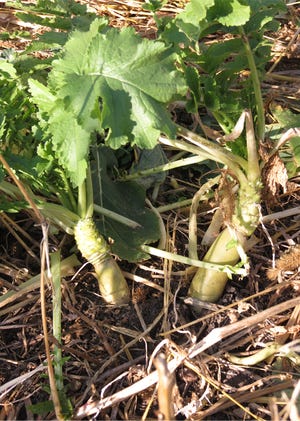March 1, 2022

A precise approach to selecting and planting cover crops that considers variability within a field will produce better results for farmers, according to South Dakota State University assistant professor Ali Mirzakhani Nafchi.
“Currently, we plant a cover crop seed mixture at a uniform, flat rate across the field, but when we have tremendous variability within a field, this is not logical,” says Nafchi, who is also the SDSU Extension precision agriculture specialist.
Varying cover crop mixtures and seeding rates based on the unique soil conditions and topography within a field will help maximize the economic and environmental benefits of this conservation management practice.
Nafchi leads a team of 10 faculty members and SDSU Extension specialists on demonstrating how a precision cover cropping system can improve outcomes. The team has expertise in agronomy, soil science, entomology, crop diseases, water management and agricultural economics.
The research is funded by a three-year Conservation Innovation Grant from USDA’s Natural Resources Conservation Service, with in-kind support from the university, SDSU Extension and participating producers. Nafchi, who previously worked with cover crops in vegetables and row crops such as corn and soybeans, at Cornell Cooperative Extension in Rochester, N.Y., reported 14 producers have signed up for the project.
The researchers will divide each cover crop field into zones based on the historical yield data, including the producers’ knowledge about the field, soil characteristics and conditions, and disease and pest challenges. Based on the data, they will then determine the cover crop seed mixtures and the seeding rates for each zone.
Extension and NRCS personnel will use the results to help those already planting cover crops to improve their results through a precision cover cropping system and to encourage more farmers to use cover crops to increase sustainability and profitability.
Consider soil characteristics
Cover crops improve soil health, which then contributes to better yields, Nafchi says. Two key factors directly related to the soil’s organic matter help increase yields:
water infiltration rate, or how quickly the soil absorbs water
water-holding capacity, which helps keep water and nutrients from running into adjacent waterbodies
Mapping the field will give the researchers data on the variability within the field. For example, measuring the soil’s ability to conduct electricity, known as electrical conductivity, helps quantify the soil structure.
“When you have clay soil, the particles are closer together, so the [electrical conductivity] number will be higher,” Nafchi says. “Sandy soils have air spaces, or voids, among the particles and less electrolytes, meaning nutrients wash away more easily, so electrical conductivity will be lower.”
To be able to identify drainage problems, the researchers will take shallow and deep electrical conductivity readings.
Make precise choices
Certain cover crops can improve the soil porosity and the void ratio, which are associated with water-holding capacity, Nafchi says. Incorporating tubers, such as tillage radishes, into the cover crop mixture can help break up compacted soil and add organic matter that will also improve water-holding capacity.
 NEW MIXES: Incorporating tubers, such as these radishes, into a cover crop mix can help break up compacted soil and add organic matter to improve soil’s water-holding capacity.
NEW MIXES: Incorporating tubers, such as these radishes, into a cover crop mix can help break up compacted soil and add organic matter to improve soil’s water-holding capacity.

The slope of a field can also be a factor in adjusting the cover crop planting to get a uniform stand. “On a north-facing slope, plants germinate later because of the cooler soil temperatures,” Nafchi says. “If we compensate for the lag by choosing the right cover crop and a higher seeding rate, we will have uniform germination.”
Specific cover crops can also help reduce pressure from soil-borne diseases and pests. For instance, cereal rye and tillage radishes can help reduce soybean cyst nematode populations.
Combining these factors, along with producer input, will help the research team determine the best cover crop mixture and optimum seeding rate for each field zone, Nafchi says, emphasizing that “precision ag means using the right input in the right amount at the right place at the right time and in the right manner to help farmers increase profitability and sustainability.”
Source: South Dakota State University, which is responsible for the information provided and is wholly owned by the source. Informa Business Media and its subsidiaries aren't responsible for any of the content contained in this information asset.
You May Also Like




